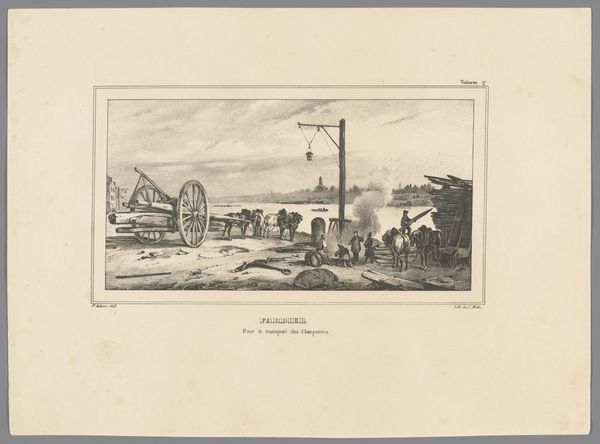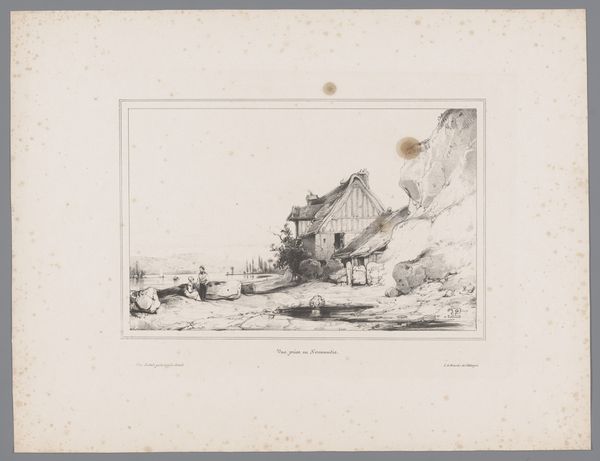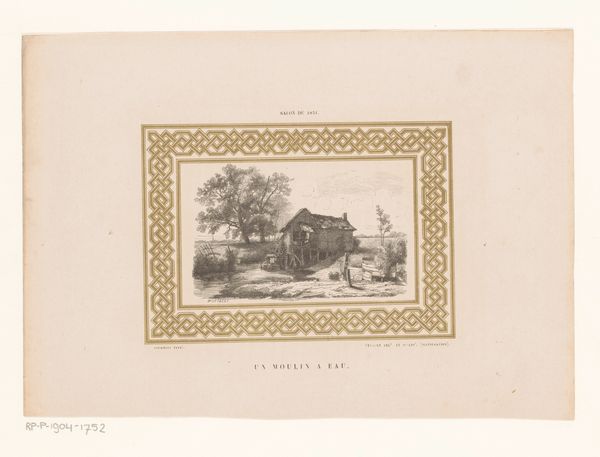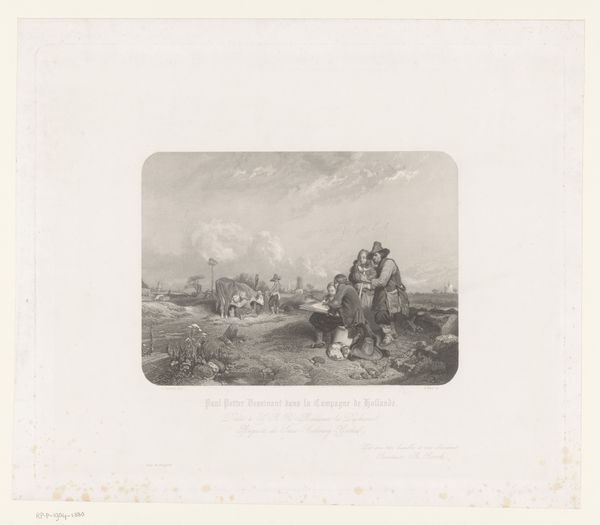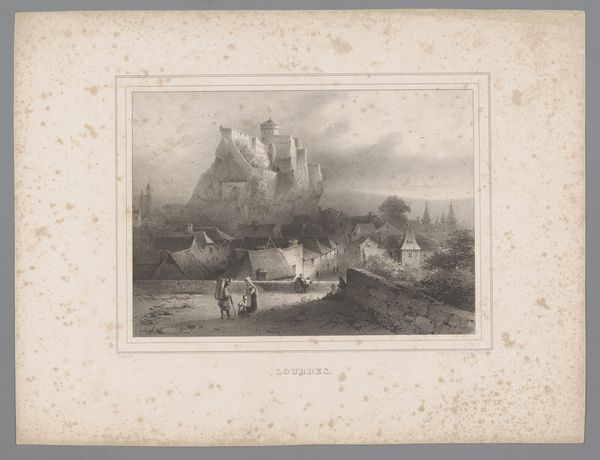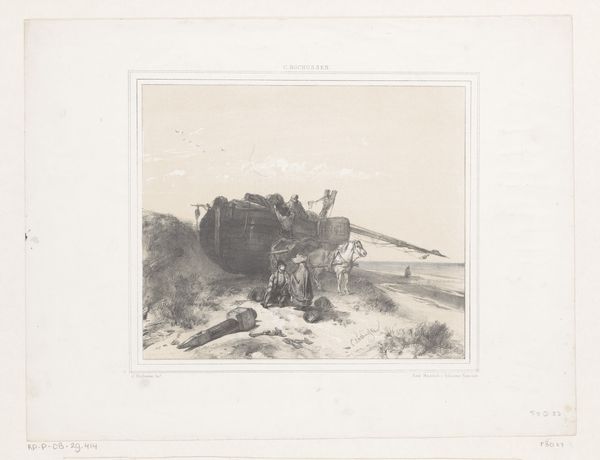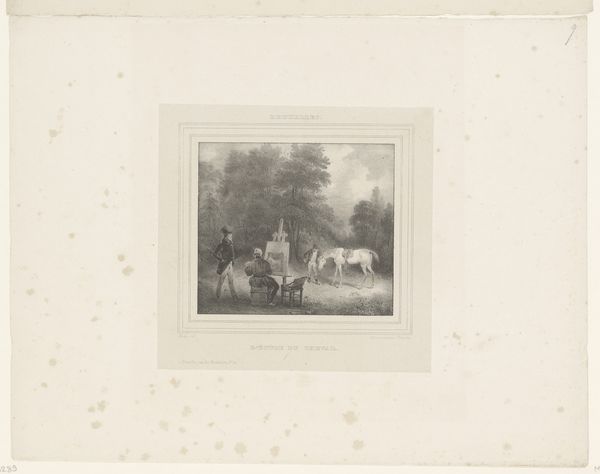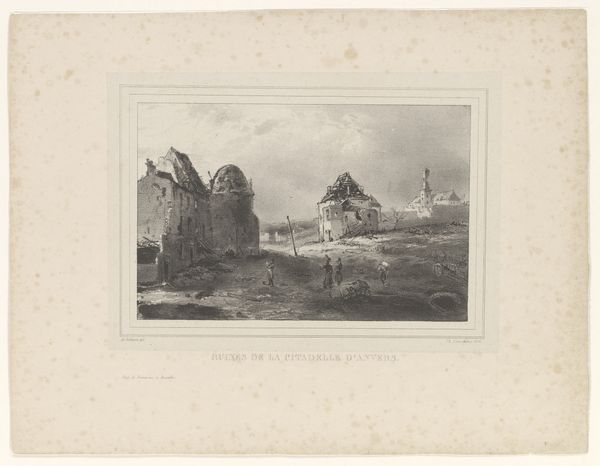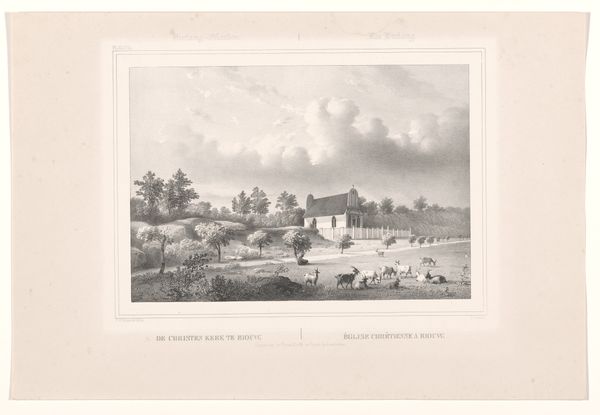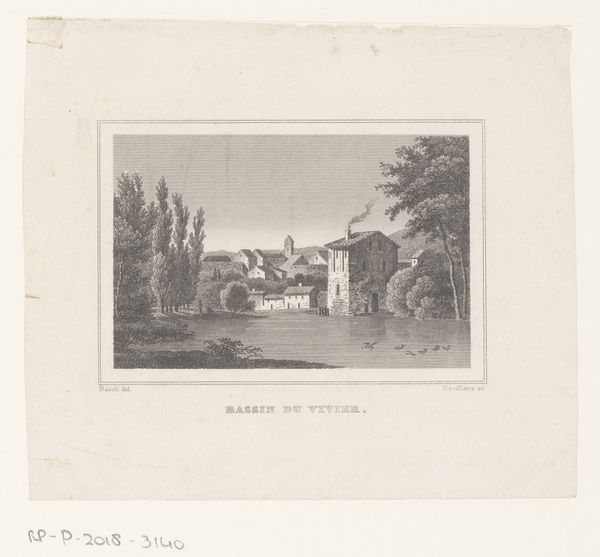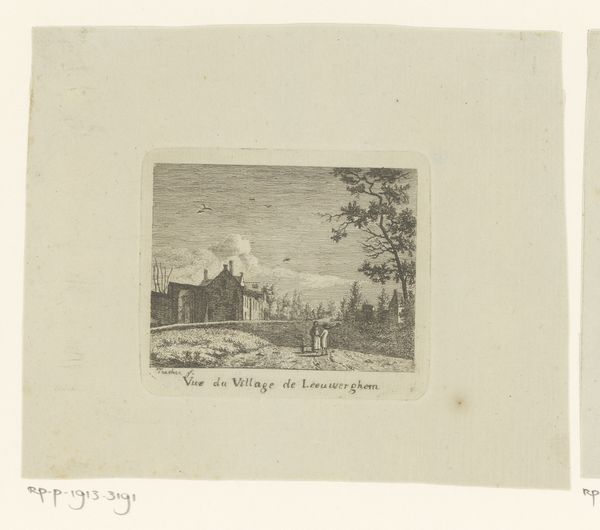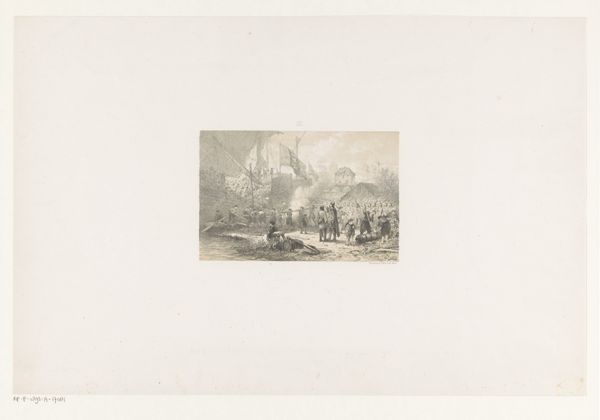
print, engraving
#
16_19th-century
# print
#
landscape
#
romanticism
#
genre-painting
#
engraving
#
realism
Dimensions: height 271 mm, width 345 mm
Copyright: Rijks Museum: Open Domain
Editor: This is "Gezicht op een dorp nabij Schagen," or "View of a Village near Schagen," an engraving by Théodore Fourmois, dating sometime between 1827 and 1871. It's held at the Rijksmuseum. I am struck by how still and posed everyone appears; like a tableau. How do you interpret the cultural context of such a scene? Curator: It’s important to remember the role of the artist as documentarian at this time. Before widespread photography, prints like this offered a vital window into everyday life for those who couldn't experience it firsthand. Consider its place within the rise of nationalism and the interest in portraying the 'authentic' rural life. What social narratives do you think it reinforces or challenges? Editor: It definitely romanticizes rural life. The peasants don't seem to be doing hard labour. They’re just chatting and strolling; everyone seems peaceful. It idealizes something very different from city life. Curator: Exactly! The distribution of such prints allowed for the consolidation of a certain national identity, one rooted in a specific, often idealized, view of the countryside. Now, observe how Fourmois uses composition. What stands out to you about the way he arranges the scene? Editor: Well, the figures in the foreground create a sort of barrier to entry. You're kept at a distance from the buildings and the rest of the village. The framing emphasizes the 'us' and 'them' dynamic. Curator: A keen observation! This reinforces the notion of the village as an idyll, viewed from the outside rather than experienced from within. What do you make of its realism vs. its romantic qualities? Editor: I think that it presents rurality as timeless, removed from political strife, and wholesome—something people aspired to be at the time. Though, thinking about how curated these scenes probably were, maybe less so. Curator: Precisely! Prints like these served to shape public perceptions, reinforcing certain social structures while presenting a seemingly objective view of reality. Editor: This reminds me how crucial it is to examine these depictions through the lens of power dynamics, especially when representing marginalized communities. Thank you.
Comments
No comments
Be the first to comment and join the conversation on the ultimate creative platform.
